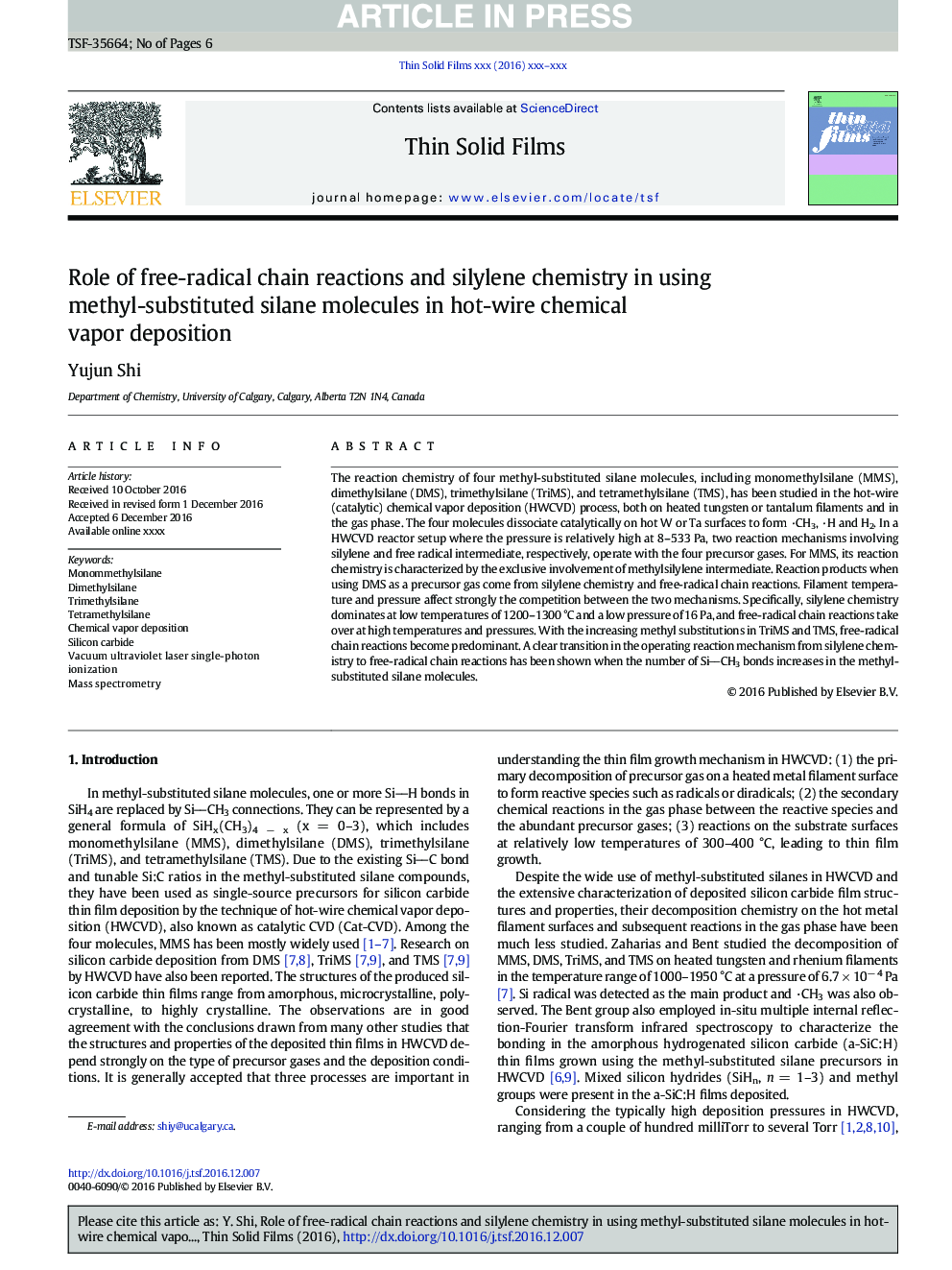| کد مقاله | کد نشریه | سال انتشار | مقاله انگلیسی | نسخه تمام متن |
|---|---|---|---|---|
| 5465967 | 1517977 | 2017 | 6 صفحه PDF | دانلود رایگان |
عنوان انگلیسی مقاله ISI
Role of free-radical chain reactions and silylene chemistry in using methyl-substituted silane molecules in hot-wire chemical vapor deposition
ترجمه فارسی عنوان
نقش واکنش های زنجیره ای رادیکال آزاد و شیمی سیلین در استفاده از مولکول های سیلاان متیل-جایگزین در رسوبات بخار شیمیایی داغ سیم
دانلود مقاله + سفارش ترجمه
دانلود مقاله ISI انگلیسی
رایگان برای ایرانیان
کلمات کلیدی
مونومتیمیل سیلان، دی متیل سیلان، تری متیل سیلان، تتراماتیل سیلان، رسوبات بخار شیمیایی، کاربید سیلیکون، یونیزاسیون تک فوتون لیزر ماوراء بنفش خلاء، طیف سنجی جرمی،
موضوعات مرتبط
مهندسی و علوم پایه
مهندسی مواد
فناوری نانو (نانو تکنولوژی)
چکیده انگلیسی
The reaction chemistry of four methyl-substituted silane molecules, including monomethylsilane (MMS), dimethylsilane (DMS), trimethylsilane (TriMS), and tetramethylsilane (TMS), has been studied in the hot-wire (catalytic) chemical vapor deposition (HWCVD) process, both on heated tungsten or tantalum filaments and in the gas phase. The four molecules dissociate catalytically on hot W or Ta surfaces to form ·CH3, ·H and H2. In a HWCVD reactor setup where the pressure is relatively high at 8-533 Pa, two reaction mechanisms involving silylene and free radical intermediate, respectively, operate with the four precursor gases. For MMS, its reaction chemistry is characterized by the exclusive involvement of methylsilylene intermediate. Reaction products when using DMS as a precursor gas come from silylene chemistry and free-radical chain reactions. Filament temperature and pressure affect strongly the competition between the two mechanisms. Specifically, silylene chemistry dominates at low temperatures of 1200-1300 °C and a low pressure of 16 Pa, and free-radical chain reactions take over at high temperatures and pressures. With the increasing methyl substitutions in TriMS and TMS, free-radical chain reactions become predominant. A clear transition in the operating reaction mechanism from silylene chemistry to free-radical chain reactions has been shown when the number of SiCH3 bonds increases in the methyl-substituted silane molecules.
ناشر
Database: Elsevier - ScienceDirect (ساینس دایرکت)
Journal: Thin Solid Films - Volume 635, 1 August 2017, Pages 42-47
Journal: Thin Solid Films - Volume 635, 1 August 2017, Pages 42-47
نویسندگان
Yujun Shi,
